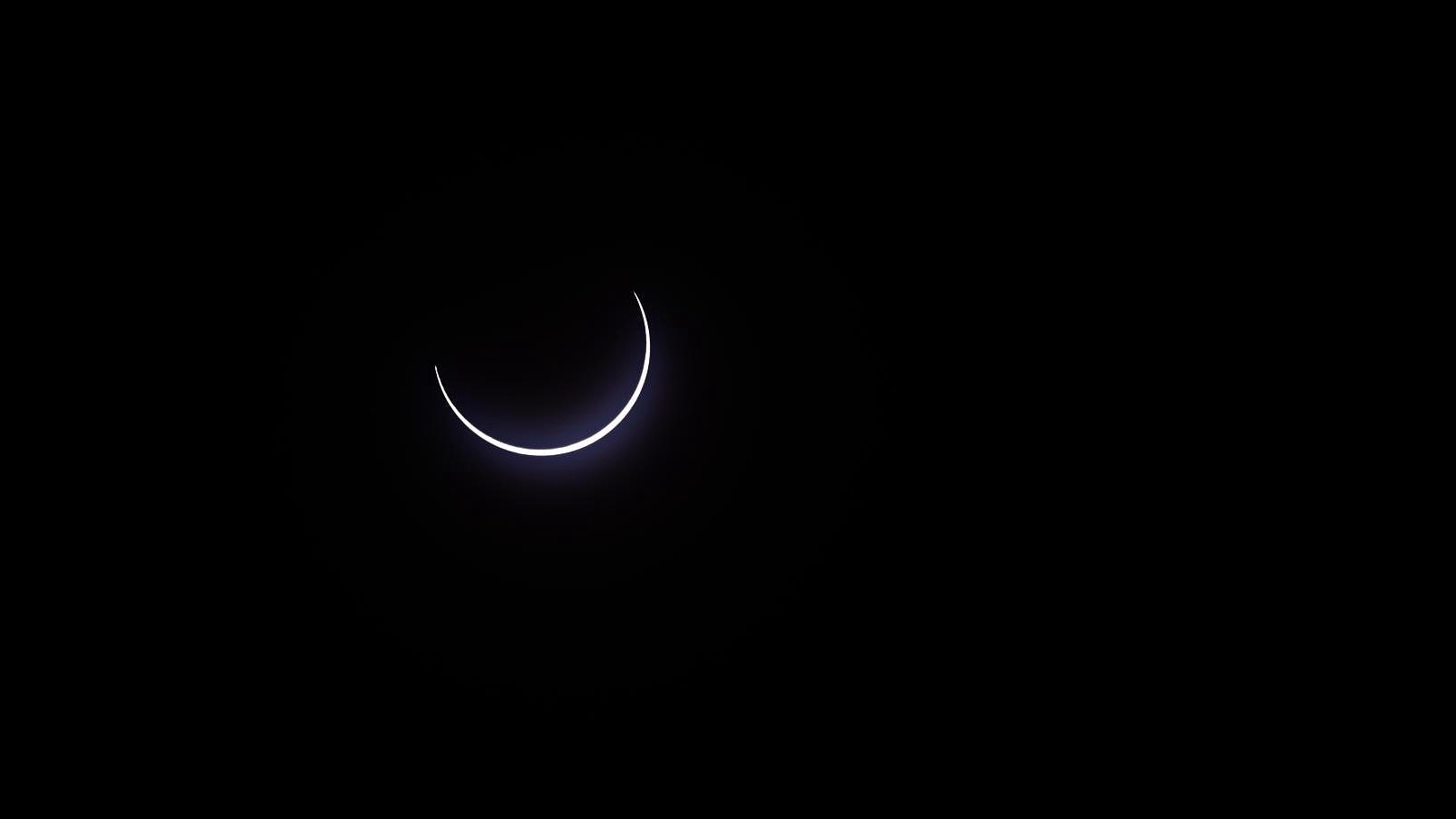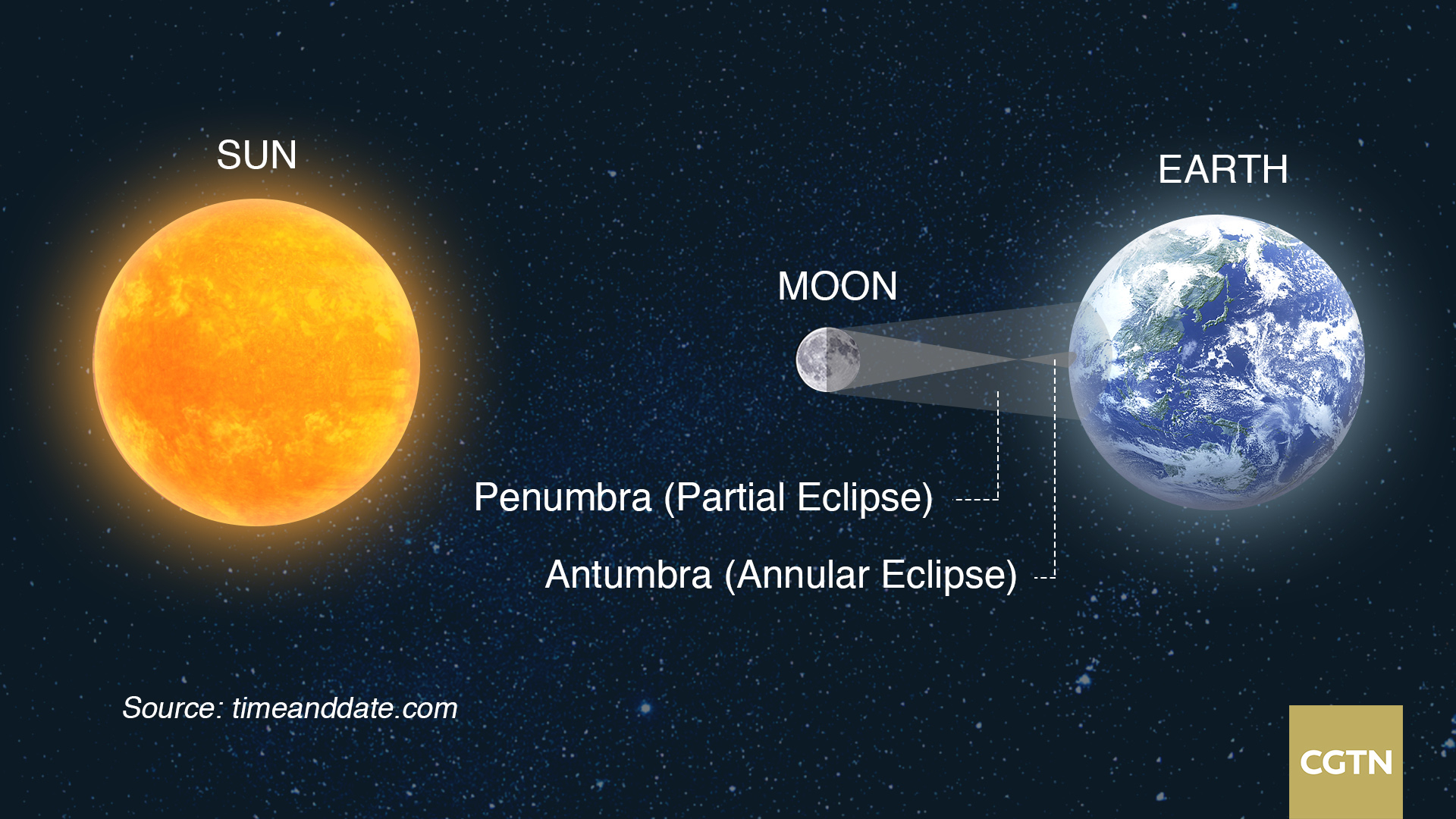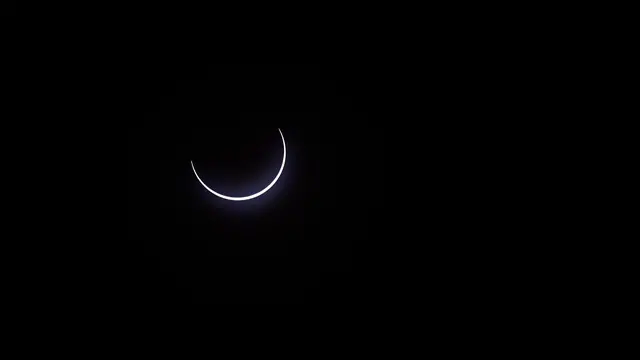
The annular eclipse occurs in Tibet Autonomous Region, June 21, 2020. /CFP
The world met its only annular eclipse this year on Thursday.
The "Ring of Fire" solar eclipse occured near the Arctic region. It began at sunrise in southern Ontario, Canada, and ended at sunset in Russia's Far East.People in some parts of Europe and Asia could also enjoy the astronomical show.
In China, a partial solar eclipse could be seen in the western and northern regions as the full phenomenon was witnessed in Xinjiang Uygur Autonomous Region and part of Tibet Autonomous Region. People in central China and parts of north China could see the eclipse during sunset, while east and south China totally missed the eclipse.
There will be another total eclipse in December over the Southern Hemisphere.

CGTN Infographic by Du Chenxin
A solar eclipse occurs when the sun, moon and Earth are aligned with the moon in between. A total solar eclipse takes place when the moon completely blocks out the sun's light, and an annular eclipse happens when the moon is farthest from Earth, as the moon seems smaller and doesn't block the entire view of the sun, said NASA.
Experts warned observers not to watch the eclipse with naked eyes or with sunglasses or through telescopes. Eclipse viewing glasses were recommended, and the continuous observation time should be no more than two minutes.
They also warned not to point the lens of cameras or telescopes directly toward the sun, otherwise, the devices could burn out.
Solar Eclipse: How much do you know?
Here are 6 questions to learn about it!
1
What is the longest possible time the moon can block the sun during a total solar eclipse?
-
7.5 minutes
-
15 minutes
-
30 minutes
-
1 hour
1 / 6
Next
2
When will Earth no longer have total solar eclipses?
-
6 million years from now
-
60 million years from now
-
600 million years from now
-
Earth will always have total eclipses
2 / 6
Next
3
Which other planets experience total solar eclipses?
-
Venus, Mars, Jupiter and Neptune
-
Mars, Jupiter, Saturn and Uranus
-
None, only Earth can have them
-
Jupiter, Saturn, Uranus and Neptune
3 / 6
Next
4
What happens to your eyes if you look at a total solar eclipse without protective lenses?
-
Nothing at all
-
You get glaucoma
-
You see floaters for a few days
-
You go blind
4 / 6
Next
5
How fast does the moon's shadow move during a solar eclipse?
-
Over 160 kilometers an hour
-
Over 1,600 kilometers an hour
-
Over 16,000 kilometers an hour
-
Over 160,000 kilometers an hour
5 / 6
Next
6
Which of these phenomena happen during a total solar eclipse?
-
Animals change their behavior
-
The air temperature drops
-
Both of the above
-
None of the above
6 / 6
Next
Correct
Wrong
Your Score
0 / 6
Let your friends and the world know



Start it again
 简体中文
简体中文

